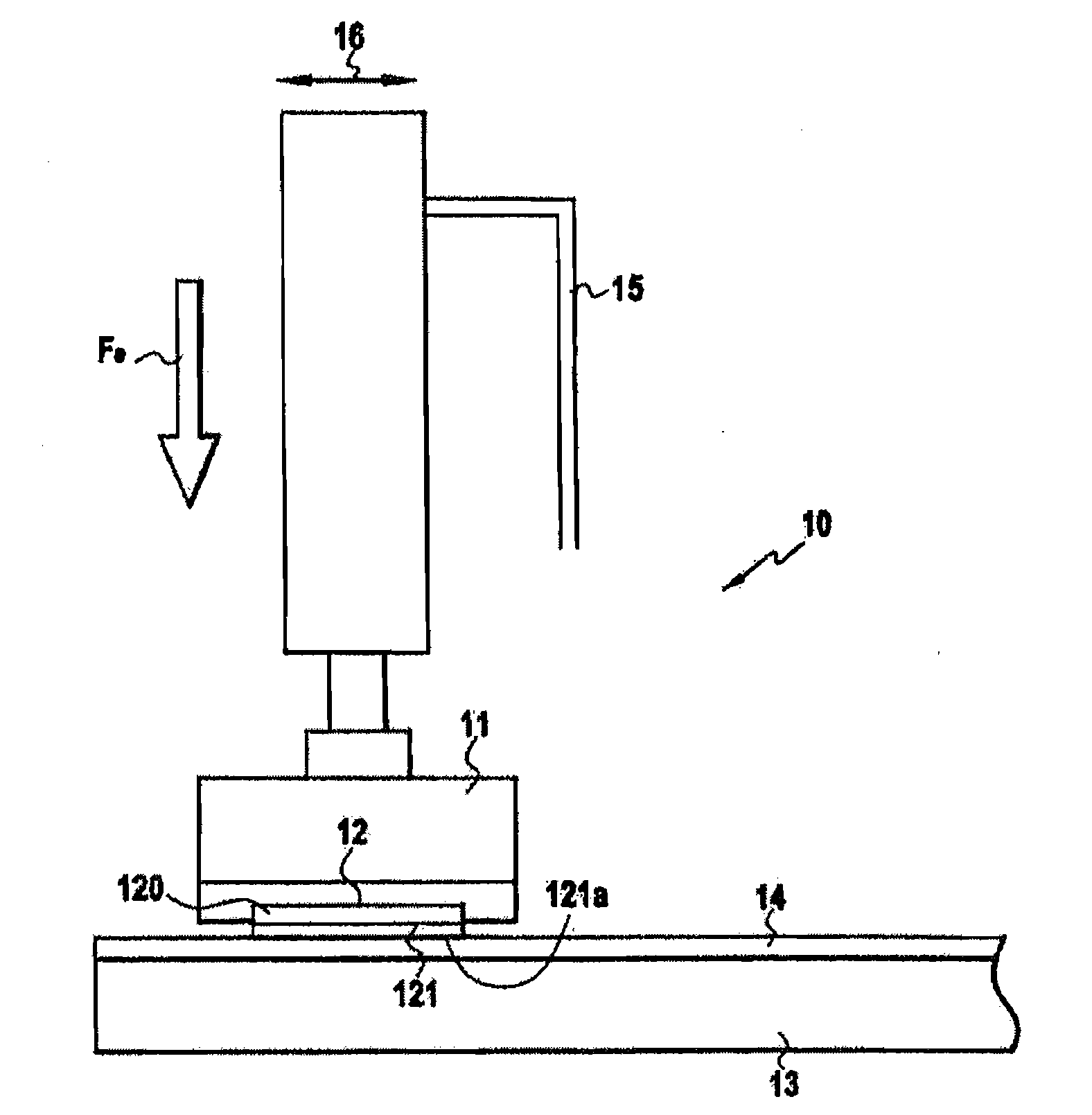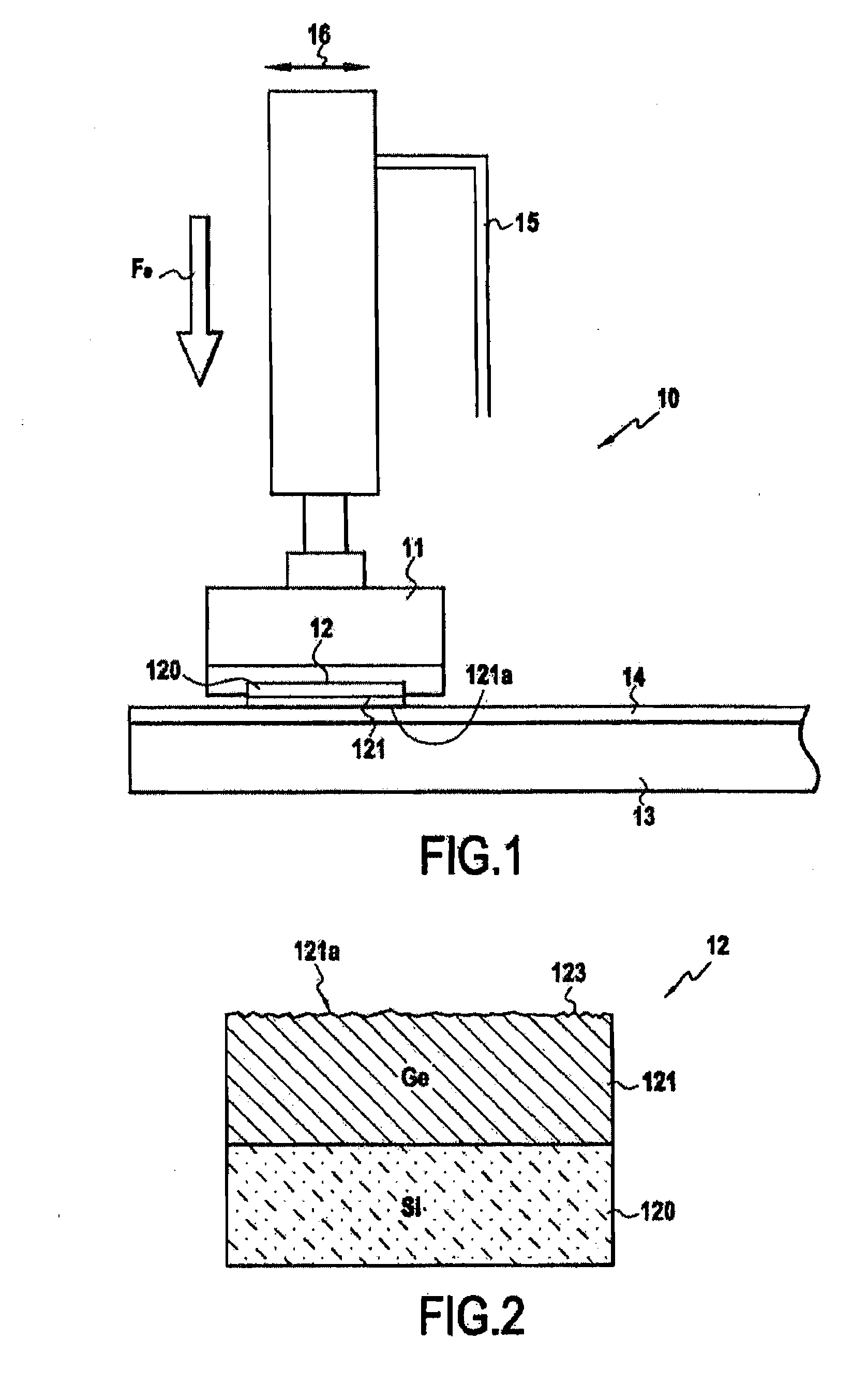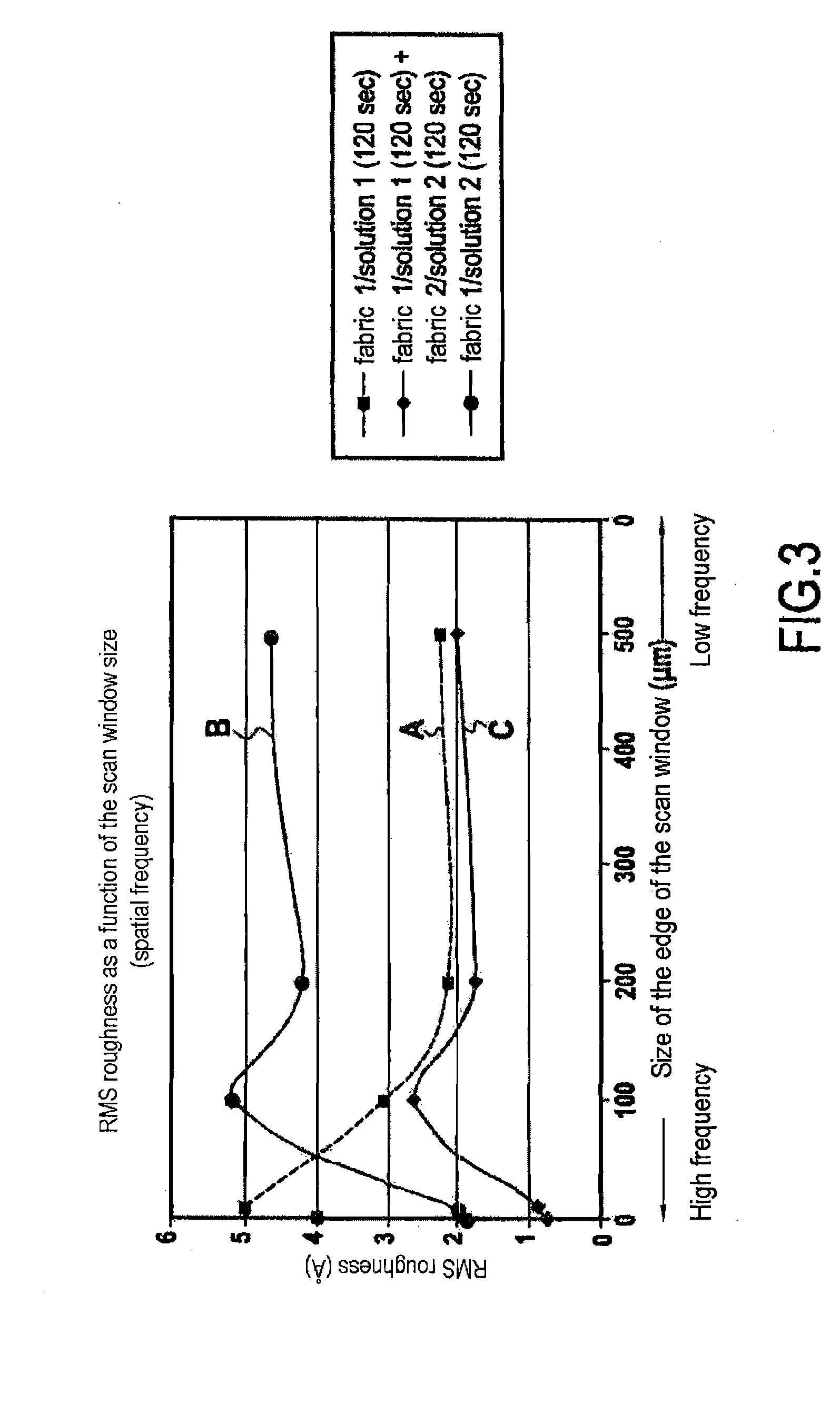Germanium layer polishing
a germanium layer and polishing technology, applied in the field of polishing germanium layers, can solve the problems of increasing the surface roughness of epitaxially grown germanium layers, affecting the polishing effect, so as to reduce the level of roughness and increase the removal rate
- Summary
- Abstract
- Description
- Claims
- Application Information
AI Technical Summary
Benefits of technology
Problems solved by technology
Method used
Image
Examples
Embodiment Construction
[0032]The method for polishing a germanium layer of the present invention comprises two chemical-mechanical polishing steps, also referred to as CMP polishing, which are carried out consecutively but under different operating conditions. In particular, the first polishing step is carried out with a first polishing solution having an acidic pH, whereas the second polishing step is carried out with a second polishing solution having an alkaline pH.
[0033]More particularly, the first and second polishing solutions contain at least colloidal silica particles and a compound for suspending these particles. A compound having an acidic pH is chosen for the first polishing solution, whereas a compound having an alkaline pH is chosen for the second polishing solution. By way of example, the abrasive solution 30H50 from “Rohm and Haas Company”, USA, may be used for the first polishing solution, and the abrasive solution Klebosol 1508-35 from “Rohm and Haas Company” may be used for the second po...
PUM
| Property | Measurement | Unit |
|---|---|---|
| diameter | aaaaa | aaaaa |
| diameter | aaaaa | aaaaa |
| diameter | aaaaa | aaaaa |
Abstract
Description
Claims
Application Information
 Login to View More
Login to View More - R&D
- Intellectual Property
- Life Sciences
- Materials
- Tech Scout
- Unparalleled Data Quality
- Higher Quality Content
- 60% Fewer Hallucinations
Browse by: Latest US Patents, China's latest patents, Technical Efficacy Thesaurus, Application Domain, Technology Topic, Popular Technical Reports.
© 2025 PatSnap. All rights reserved.Legal|Privacy policy|Modern Slavery Act Transparency Statement|Sitemap|About US| Contact US: help@patsnap.com



